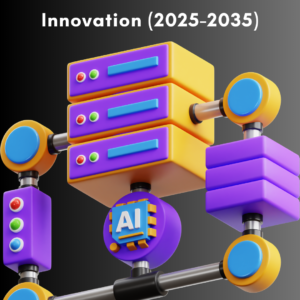1. Executive Summary:
-
- Overview of yield issues in advanced semiconductor manufacturing (sub-7nm nodes)
- Key findings on yield improvement strategies and vendor collaboration
- Future trends in semiconductor manufacturing beyond 7nm
2. Introduction to Semiconductor Manufacturing Beyond 7nm:
-
- Evolution of semiconductor manufacturing processes and scaling challenges
- Significance of yield management at advanced nodes (7nm, 5nm, 3nm, etc.)
- Overview of critical processes in sub-7nm semiconductor production
3. Yield Issues in Advanced Semiconductor Manufacturing:
-
- Critical Processes That Generate Yield Issues:
- Lithography: Challenges with extreme ultraviolet (EUV) lithography and patterning
- Etching: Precision challenges in deep etching at smaller nodes
- Deposition: Variability in atomic layer deposition (ALD) and chemical vapor deposition (CVD)
- CMP (Chemical Mechanical Planarization): Uniformity issues in surface planarity
- Materials: Impact of defect densities in substrates and materials
- Common Yield Loss Factors:
- Defect densities, particle contamination, and material inconsistencies
- Variability in process equipment performance
- Linewidth roughness (LWR) and patterning defects
- Electrical failure mechanisms (e.g., electromigration, leakage)
- Issues arising from scaling interconnects and vias
- Impact of Yield Loss on Cost and Time-to-Market:
- The financial implications of poor yield on production
- How yield issues affect production timelines and competitive positioning
- Critical Processes That Generate Yield Issues:
4. Solutions to Yield Issues in Advanced Semiconductor Manufacturing:
-
- Process Control Solutions:
- Advanced metrology tools for in-line monitoring and defect detection
- AI/ML integration in process optimization and yield prediction
- Use of advanced lithography techniques (e.g., multi-patterning, self-aligned double patterning)
- Equipment Solutions:
- Improvements in etching, deposition, and lithography tools (e.g., ASML, Applied Materials)
- Role of machine learning in equipment optimization and predictive maintenance
- Co-optimization of hardware and software for defect reduction
- Material Solutions:
- Use of high-k materials and next-generation dielectric solutions to reduce failure
- Innovations in wafer materials, substrates, and epitaxy techniques
- Collaborative Solutions:
- Collaboration between fabs, EDA tool providers, and equipment vendors in yield improvement
- Role of cloud-based data sharing for real-time yield analysis across fabs
- Process Control Solutions:
5. Collaborative Relationships in Advanced Semiconductor Manufacturing:
-
- Division of Roles Among Ecosystem Vendors:
- Semiconductor manufacturers (foundries) vs. ecosystem partners (equipment vendors, material suppliers, EDA tool providers)
- Collaborative efforts in process co-optimization and equipment tuning
- Vendor roles in addressing specific process challenges (e.g., ASML for EUV lithography, Lam Research for etching)
- Strategies for Successful Collaboration:
- Joint development agreements (JDAs) between fabs and vendors
- Key collaboration frameworks for yield improvement (data sharing, AI models, test wafers)
- How material suppliers are working with equipment vendors to improve yields
- Case Studies of Vendor Collaboration:
- Examples of successful collaborative efforts in advanced node manufacturing (e.g., Intel, TSMC, Samsung)
- Impact of strategic alliances and partnerships on yield improvements
- Emerging Collaborations for Future Nodes (3nm and beyond):
- Development of next-gen materials (e.g., graphene, 2D materials) in collaboration with material providers
- Collaborative efforts in scaling quantum computing and advanced packaging (e.g., 3D stacking, chiplets)
- Division of Roles Among Ecosystem Vendors:
6. Future Trends in Semiconductor Manufacturing and Yield Optimization:
-
- AI and Automation in Yield Management:
- Role of AI in predictive analytics for yield improvements
- Autonomous fabs and the future of lights-out manufacturing
- New Material Integration for Yield Enhancements:
- Potential of 2D materials, carbon nanotubes, and new interconnect materials
- Challenges in adopting new materials for mass production
- The Shift Towards Advanced Packaging and 3D ICs:
- Impact of advanced packaging on yield management
- Yield challenges associated with 3D stacking and heterogeneous integration
- Quantum Computing and Yield Issues in Superconducting Chips:
- How quantum technologies are shaping future yield management in manufacturing
- AI and Automation in Yield Management:
7. Challenges and Recommendations:
-
- Key Challenges in Managing Yield at Advanced Nodes:
- Difficulties in scaling to 5nm and beyond
- Variability in equipment performance and process control limitations
- Managing defect densities at atomic levels
- Recommendations for Semiconductor Manufacturers and Vendors:
- Enhanced collaboration and open data sharing between fabless companies and foundries
- Investment in next-gen process control and metrology tools
- Leveraging AI/ML to improve predictive maintenance and yield optimization
- Key Challenges in Managing Yield at Advanced Nodes:
8. Conclusion:
-
- Summary of the key insights on yield issues, solutions, and collaboration
- Strategic recommendations for ecosystem vendors and manufacturers to address yield challenges in advanced semiconductors
9. Appendices:
-
- Glossary of technical terms related to semiconductor yield management
- List of key vendors and their roles in the semiconductor manufacturing ecosystem
- References and further reading on yield improvement strategies




